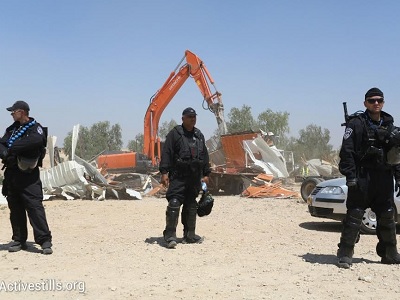
By Jamal Kanj
Palestinian civic organizations inside Israel have declared January 30 the Day of Solidarity with Palestinian Israeli citizens.
Israel was established in 1948 on the ruins of more than 500 native towns and villages and the forceful displacement of approximately 780,000 Palestinians. Only 153,000 Palestinians remained under what became Israel. Of which, approximately 25 per cent became refugees in their own country when their homes were destroyed and their land was expropriated by the new state.
Palestinians who continued to live in what became Israel were governed until 1966 by martial laws under appointed Jewish military governor. Unlike Jews, Palestinians couldn’t travel inside Israel without special military permit, lived under the threat of curfew, administrative detention and expulsions. Israel expropriated their land allegedly for military use before they were turned over for the exclusive civilian use of Jewish citizens.
No wonder in 1948, Palestinians owned 80pc of the land. Following the establishment of Israel, their land had shrunk to less than 3.5pc. The same laws were used extensively in the West Bank to confiscate Palestinian land, which were later handed to Israeli settlers to build “Jewish only” colonies.
Israel has two systems: One for its Jewish citizens and another for Palestinian non-Jewish citizens. In education, a 2001 report by Human Rights Watch described Israeli run Palestinian schools “a world apart from government-run Jewish schools.” A Committee on Arab Education inside Israel found in 2005 that Israel spent an average of $192 a year on Palestinian students compared with $1,100 for Jewish students.
These discriminatory policies translated to great economic disparity between Jews and non-Jews. As a result, they are under-represented in civil service, high technology and financial sectors while over-represented in meagerly paid low-skilled trades. For example, out of 150,000 employees in the high-tech sector, only 460 are Palestinians.
Palestinian Israeli citizens represent 20pc of the population. They, however, account for more than 50pc of the impoverished families in Israel. In fact, out of the 40 Israel communities with the highest unemployment rates, 36 are Palestinian towns.
Discrimination in health care at an early age is equally striking. According to the Israeli newspaper Haaretz in December 2014, infant mortality rate among Palestinians is more than double the rate of Jewish babies -2.5 for Jewish babies and 6.3 for Palestinians.
On the housing front, discrimination is more blatant. Since 1948, Israel has established more than 1,000 new Jewish cities and towns on the land expropriated from it original Palestinian owners. On the other hand, Israel did not build one single new (non-Jewish) Palestinian community despite the fact that their population grew 10-fold.
Israel building policies choke Palestinian communities by restricting construction permits and demolishing homes of Palestinians as in the case of December 15, 2015 in the town of Tamra. Currently, there are active official orders to demolish 50,000 homes purportedly built without government permits.
Another salient case of Israeli discrimination against non-Jewish Israeli citizens is the Prawer-Begin plan to depopulate 35 unrecognized Palestinian Bedouin communities in the Negev desert. In one instance, Israel demolished and Palestinians rebuilt the village of Al Araqeeb 93 times in the last five years.
The Prawer-Begin plan is part of a larger racist strategy aimed to increase the sparse Jewish population in the Negev desert by building 22 new Jewish communities. This is while eradicating Palestinian villages that predated the establishment of the state Israel.
In the face of the unmitigated wave of additional formalized discrimination by the current ultra-right-wing Israeli government of Benjamin Netanyahu, Palestinians inside Israel are bringing their grievance to the attention of the international community. Israel can’t continue to use the Jewish victims of the Holocaust to justify its racist and malevolent policies against non-Jewish citizens of Israel.
– Jamal Kanj (www.jamalkanj.com) writes regular newspaper column and publishes on several websites on Arab world issues. He is the author of “Children of Catastrophe,” Journey from a Palestinian Refugee Camp to America. He contributed this article to PalestineChronicle.com. (A version of this article was first published by the Gulf Daily News newspaper.)





Please allow me to make some corrections. Israel was not built only on the destroyed 500 towns and villages but also on major Palestinian cities such as Haifa, Jaffa, Acre, Safad, Nazareth and tens of others it occupied in 1948. Secondly, Israel did not destroy all the villages and homes of the internal Palestinian refugees, some were stolen and given to Jews while the Palestinian owners who became Israeli citizens are denied their rights to their properties, such as the historic village of Ein Hod, Deir Yassin, West Jerusalem and many others.